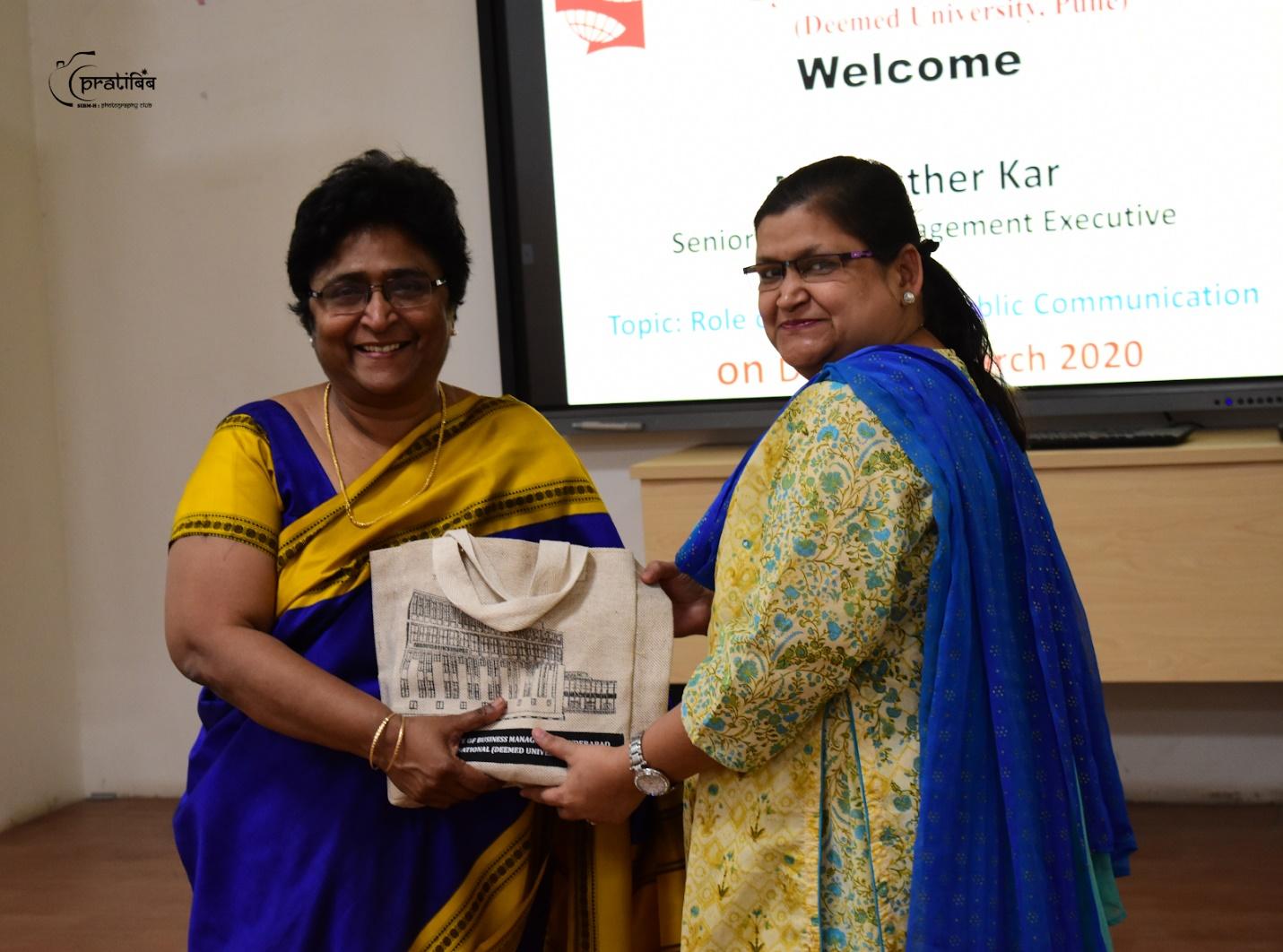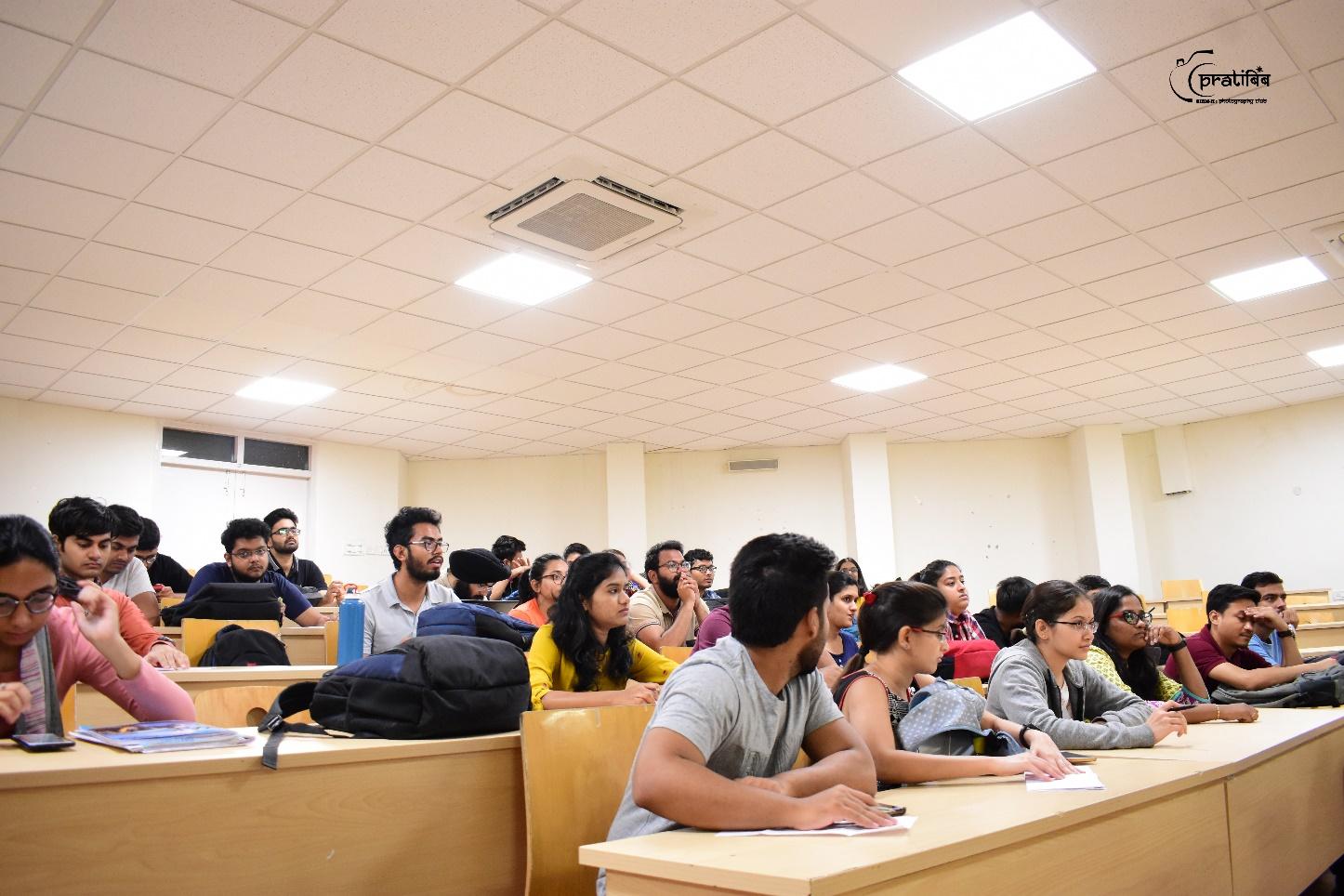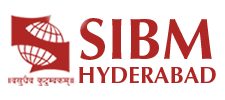Report on “Role of Media and Public Communication”
Report on “Role of Media and Public Communication”
Date : March 04, 2020
On March 04, 2020, SIBM Hyderabad had the privilege of hosting Mrs. Esther Kar, a Senior Public Management Executive. With over 33 years of experience as a Media researcher, Mrs. Kar started the lecture by making the students understand the significance of the Role of Media in Government Campaigns and its categorization. She explained that the Media was distinguished into 2 types - Legacy Media, which forms the mass media institutions and New Age Media which are rather computational in nature. The lecture was further shaped to make the students understand the crux of how the Media strives to be credible in order to build an effective communication strategy.

Felicitation of the Guest Speaker, Mrs. Esther Kar by Dr. Ridhi Rani (Faculty - Human Resources)
Throughout the lecture, Mrs. Kar highlighted real-time examples of how the traditional media is shaping itself in the current scenarios, for instance, an example quoted was about the traditional media such as Newspapers and how they are currently going behind a paywall to increase their online presence and to further become less dependent on the Government. The lecture also helped the students to mark a clear difference between designing a generic marketing campaign for a product/service when compared to designing a campaign for a Government initiative.
The following key points were emphasized in the process of designing a Campaign for the Government. The first is to plan the campaign in such a way that more focus is paired with selling the idea rather than selling the product. The second point is to link between the policy and delivery where the stakeholders take a front seat in building the credibility to the message and developing a positive notion around the campaign. The third point mentioned in the lecture was said to be the most vital step, which is to ensure that there is a two-way communication process throughout. Lastly, the roles of Public Communication and Mass Communication were distinguished, the former is said to be a responsive communication method while the latter falls under the top-down approach and is often addressed to a larger audience.
As the reach of a campaign pertaining to a Government initiative is huge, Mrs. Kar stressed the sensitivity quotient of how the communication is perceived by the public and for which the presence of Authorized Personnel in the team becomes essential. These personnel are responsible for two-way communications between the Government and the Public. The students were made to understand their role is not only restricted to act as communicators but also requires them to stay close to the decision-makers. In case a situation arises, these individuals will become the spokespersons for the government and hence will have a quick clearance in the matters of Public Relations.

Mrs. Kar also shed light on the fact that the readership of English newspapers has fallen by 30% whereas when it comes to Hindi newspapers it has risen by 40%. This shows that there has been a growth in the regional language media as there has been a rise in neo-literates due to the rising literacy in rural India. This shows that the corporates should pay far greater attention to regional channels of media to have greater penetration in rural India.
When it comes to journalism there has been a considerable rise of opinions through talk shows & debates over editorials. The main cause of this issue is that readers want “Instant Coffee” i.e., they want everything quickly on their fingertips. Moreover, there are only a few organizations that are willing to show multiple narratives of the same story. But due to the advent of technology newspapers such as the Indian Express leveraged WhatsApp to increase their readership by delivering news on a regular interval directly to the reader.
Mrs. Kar also shared the case of BP where there was poor handling of a crisis. Through this case, she explained to the students how not to handle a crisis as when an organization downplays a crisis and shows poor PR handling then the media takes the mirror for the truth and crumbles the image of the organization in the eyes of the public.
Moreover, through her vast experience in working with government agencies, she gave the students a better understanding of how they work. Anecdotes of failures in PR such as the Chennai floods PR mishap enabled the students to understand the consequences of manipulating events. Students also asked her to on the business model of DD India and she answered it by contrasting DD India with the BBC’s business model
Through her expertise and research background on community radios, she gave the students a deep dive on functions & benefits of community radios and how Gram Vaani & Mobile Vaani has enabled the reverse flow of information i:e; from the less empowered strata to the privileged. She also suggested the students of SIBM Hyderabad try their luck on establishing a community radio in Mamidipally to better understand what is actually happening in their surroundings and help in empowering the people living in the surrounding villages.
The session concluded at 3:00 pm by Mrs. Kar stated that crisis management via truth is the most important and efficient way for an organization to survive in the 21st century.

